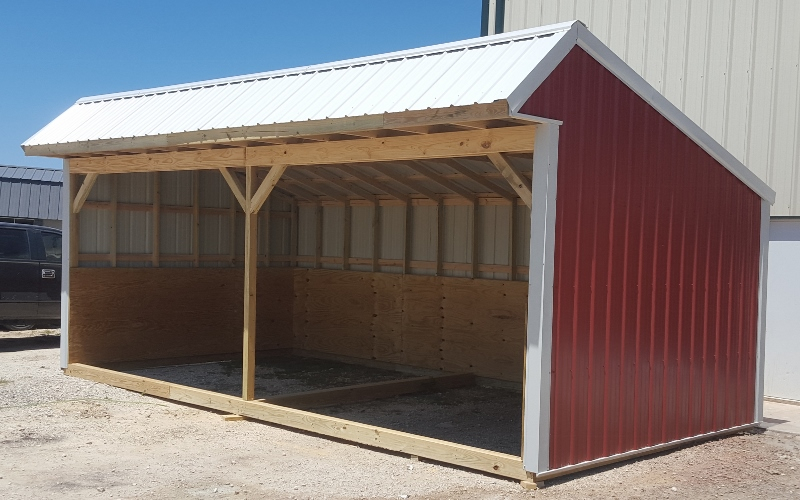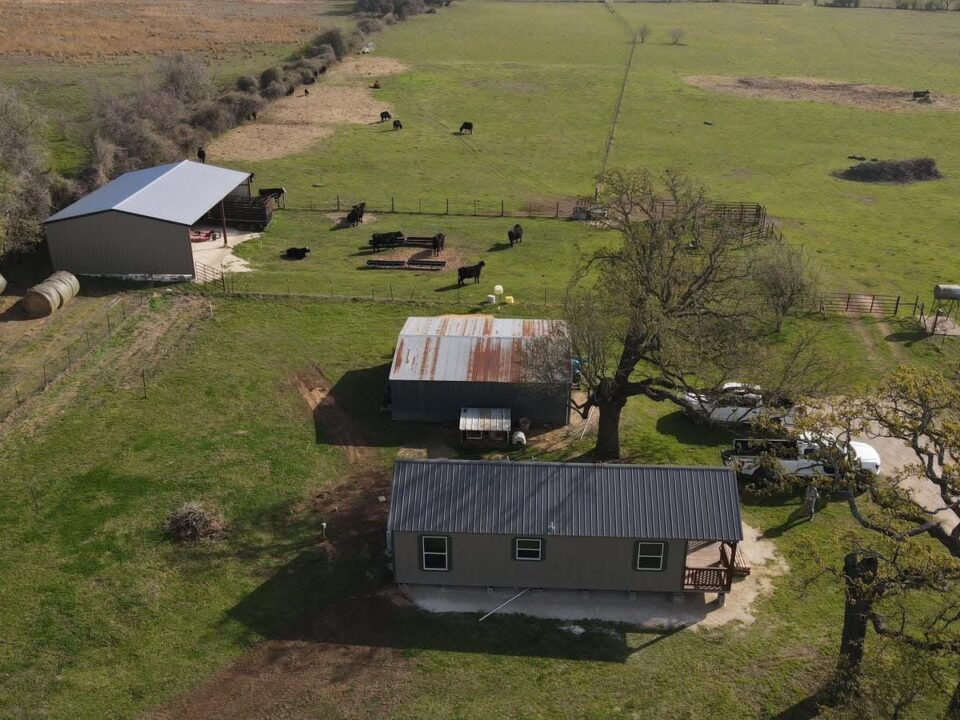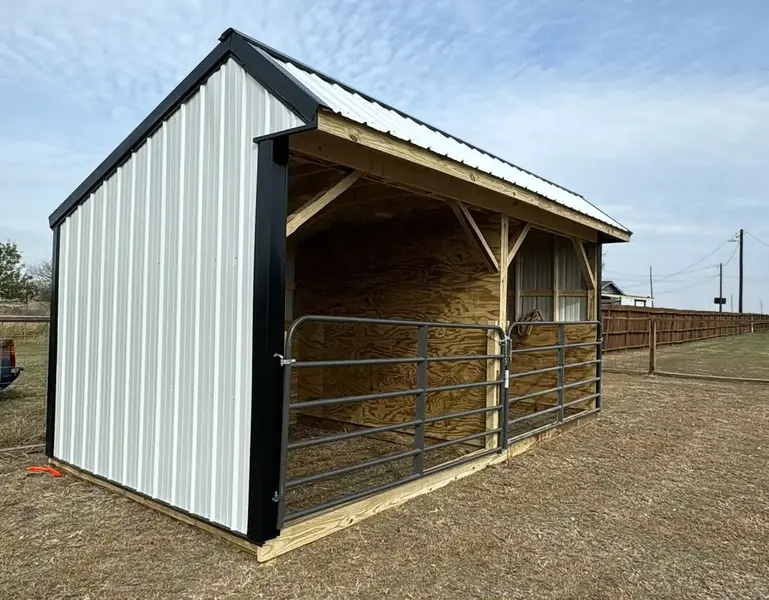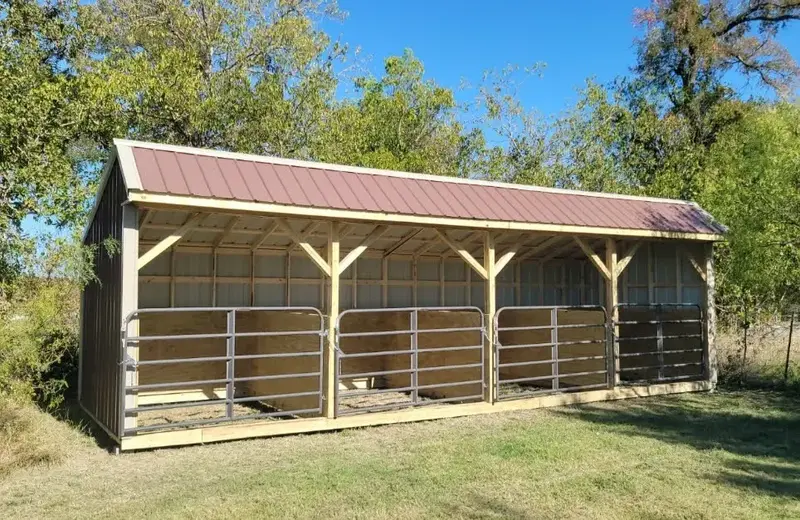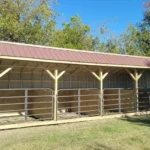
The Health Benefits of Proper Animal Shelter Design
July 21, 2025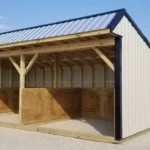
Why Wolf Valley Animal Shelters Are Built to Last
July 22, 2025
Daily Routine for Goats 🐐
Goats thrive on rhythm. These curious, social animals feel safest and healthiest when their days follow a predictable routine. Whether you’re raising goats for milk, meat, or companionship, structure creates a strong foundation.
A consistent daily routine not only keeps your goats well-fed and comfortable—it makes your life easier too. From feeding to shelter checks, here’s how to shape each part of the day for a thriving herd.
Start the Morning with Feed, Water, and a Quick Health Check 🌅
Begin your day by walking through the shelter or pasture. Look each goat over. Are they standing alert? Moving well? Chewing cud? Early signs of trouble—like bloating, limping, or isolation—often show up before more serious issues develop.
After your walkthrough, refresh their water. Goats need clean water, and many won’t drink if it looks dirty or stale. Fill hay feeders with fresh forage, and if your goats need grain, offer a measured portion based on their stage of life. Lactating does and growing kids often need the extra calories, but overfeeding can cause problems. Check the mineral feeder too. Loose minerals—especially with copper and selenium—should stay available year-round.
If you milk goats, this is the time to bring them to the stand. Milking in the morning, typically between 6 and 8 a.m., helps maintain a steady supply and keeps the herd on a rhythm.
Midday: Maintain the Shelter and Keep Goats Engaged ☀️
During the midday lull, goats rest, ruminate, or explore. Take advantage of the quiet to do a quick shelter check. Clear out wet or soiled bedding, open windows for airflow, and walk the fenceline. Make sure the shade still covers key areas and that the goats have dry ground to lie on.
Keep boredom at bay by offering enrichment. Goats are browsers, not grazers, so they enjoy variety. Add branches for chewing, rotate their pasture, or let them climb platforms and rocks. They’ll stay calmer and healthier when their environment changes just enough to stay interesting.
Sit with them for a few minutes if you can. The more you interact, the easier future handling becomes—and you’ll strengthen your bond with the herd.
Afternoon: Let Goats Rest and Keep Watch 💤
In the early afternoon, most goats settle into rest. You’ll see them lying down, chewing cud, and lounging in the shade. This time helps their digestive system process food properly and gives their bodies a chance to recharge.
While they rest, walk the area one more time. Top off water buckets if needed. Watch for overheating in summer or shivering in cold months. If any goats separate from the herd or act listless, take a closer look. For nursing does, check that kids are feeding and staying close.
You don’t need to interfere, but your quiet presence helps you catch changes before they become problems.
Evening: Refeed, Secure the Shelter, and Settle In 🌙
As the sun lowers, goats become active again. Offer a second feeding if your herd includes dairy does, growing kids, or goats with higher caloric needs. Top off hay and make sure mineral access remains available. Dump and refill water buckets if needed.
Check gates and fencing again. Close up barns or loafing sheds to protect the herd from predators. If your goats sleep outside in summer, make sure the shelter still offers wind protection and dry bedding. If you’re using a Wolf Valley goat shelter, latch doors and confirm airflow is still moving through the vents.
Evenings mark a final reset before nightfall. When everything’s in place, your goats rest better—and so do you.
Weekly Add-Ons That Keep Things Running Smoothly 🗓️
In addition to daily care, a few weekly habits help your routine stay efficient. Trim hooves every few weeks or as needed, especially if your goats live on soft or wet ground. Fluff bedding and replace high-traffic areas to keep the shelter clean and odor-free.
Walk your fence line each week. Look for spots where predators might dig or where goats could escape. While you’re at it, give each goat a hands-on check. Look for weight loss, rough coats, parasites, or skin issues.
These extra steps only take a little time but prevent costly problems down the road.
Why Consistency Builds a Better Herd ❤️
Goats feel more secure when they know what to expect. They settle more easily, eat better, and resist illness when their environment stays steady. And for you, routine means fewer surprises, faster chore time, and better results.
Structure keeps your herd in sync—and keeps you ahead of problems instead of reacting to them.
Build a Strong Routine on a Solid Shelter
At Wolf Valley Buildings, we understand the connection between strong routines and smart shelter design. Our goat shelters and loafing sheds offer the airflow, dry bedding, and protection your herd needs—whether you’re feeding kids, milking dairy does, or managing a mixed group.
We’ll help you choose a layout that supports your daily flow, simplifies chores, and stands up to unpredictable weather.
Let’s build something that works—every morning, noon, and night. 🐐
🔗 Internal Links
Predator-Proofing Your Animal Shelter
How to Build a Shelter for Your Small Animals
View Our Animal Shelters

